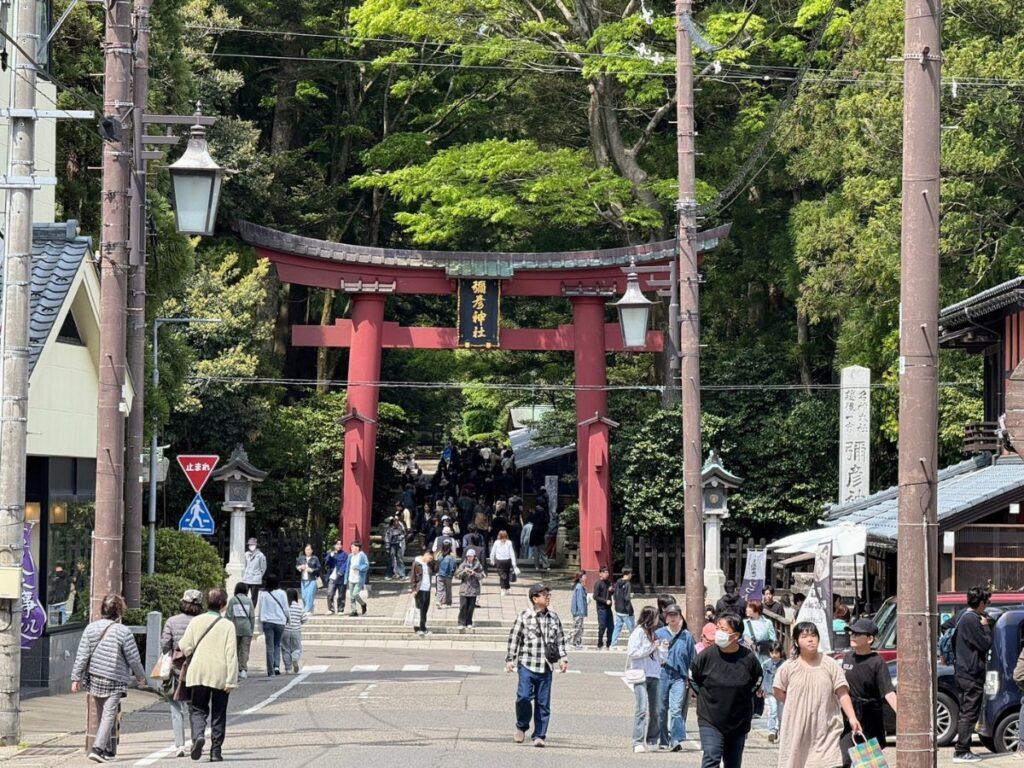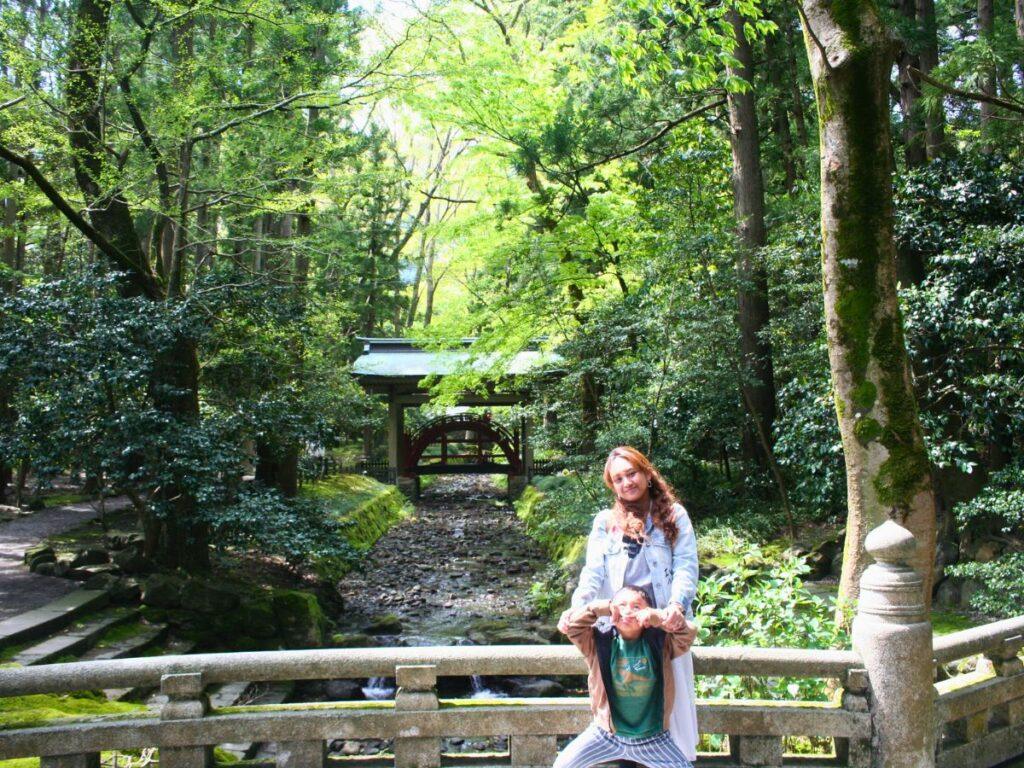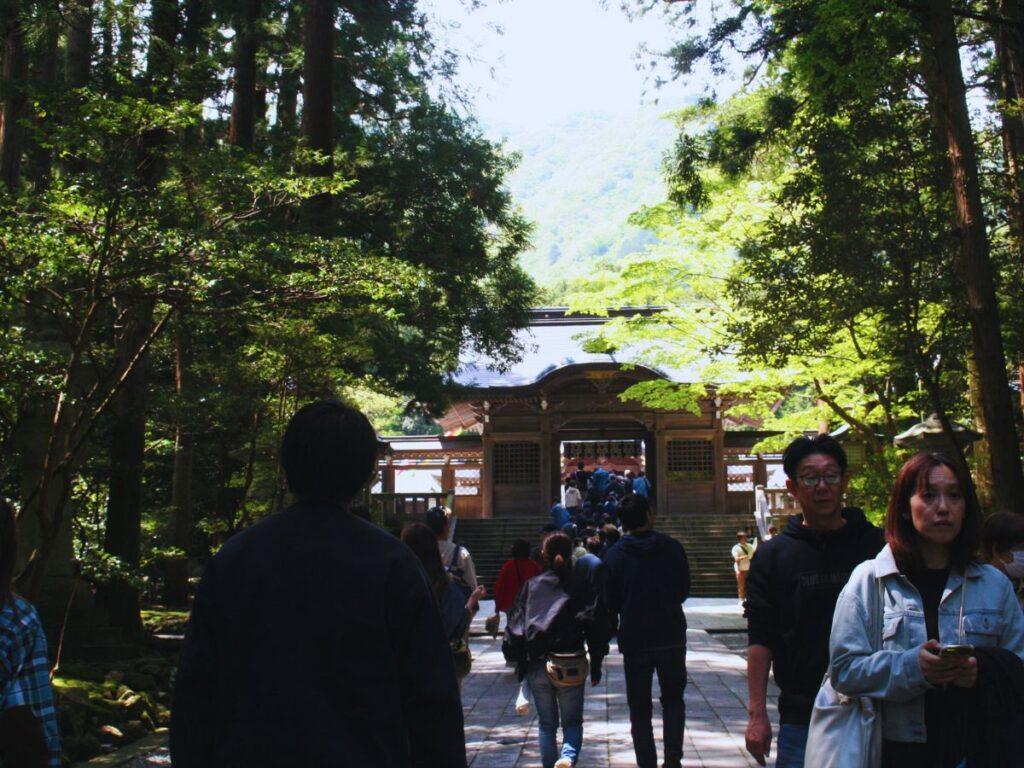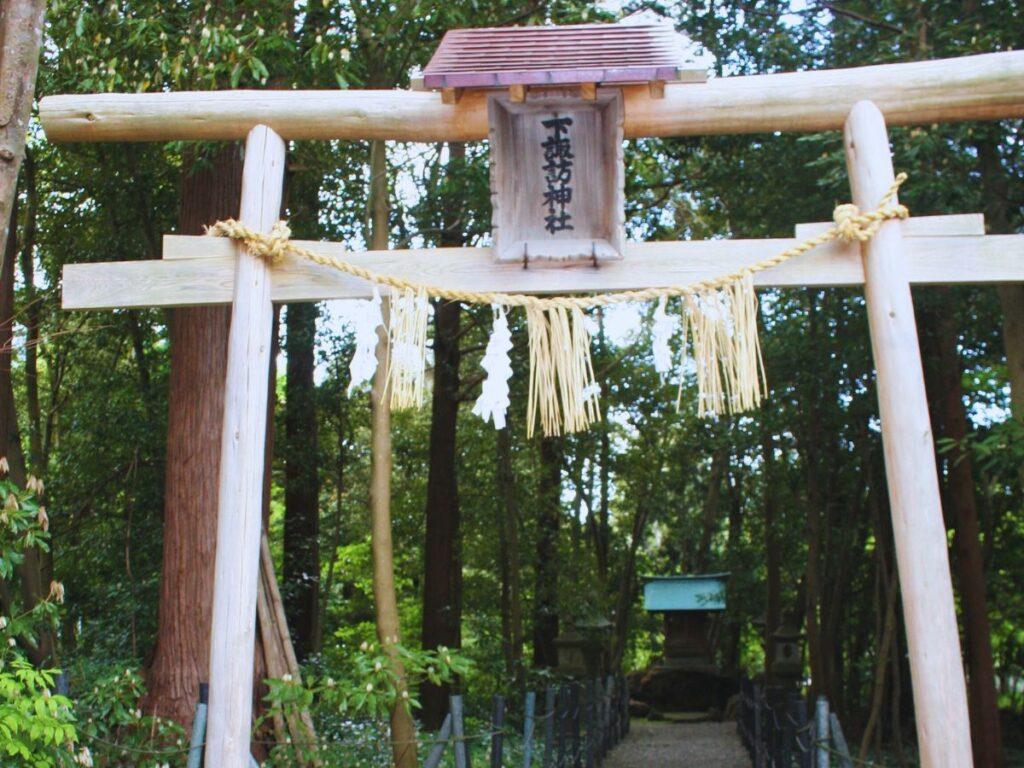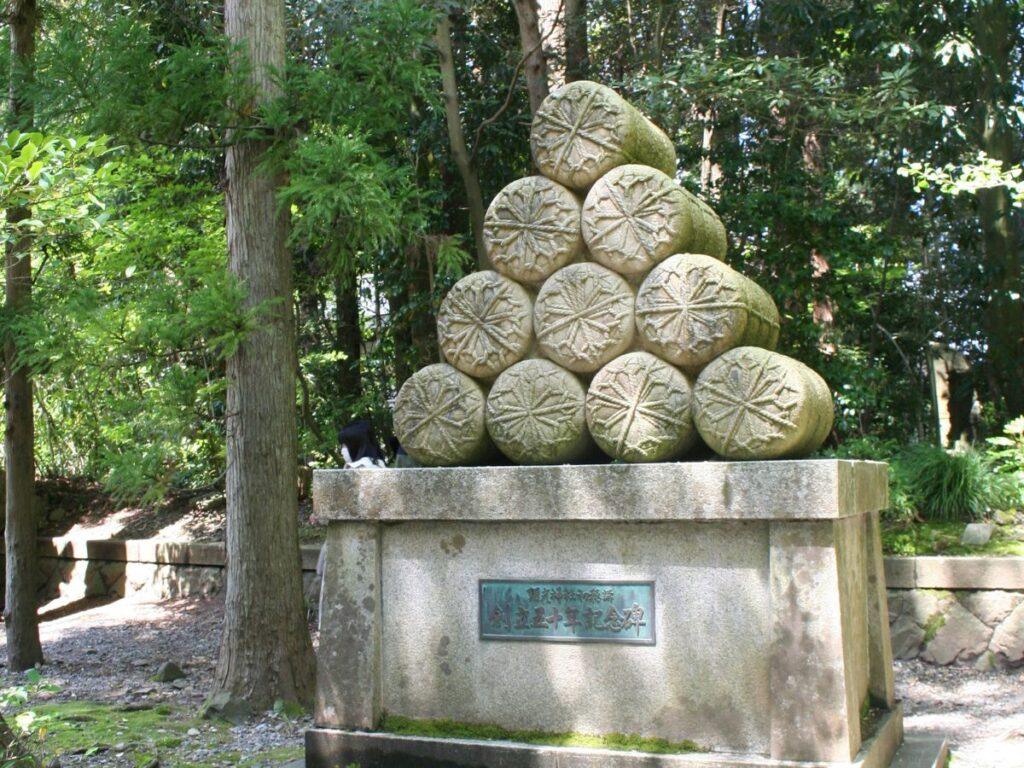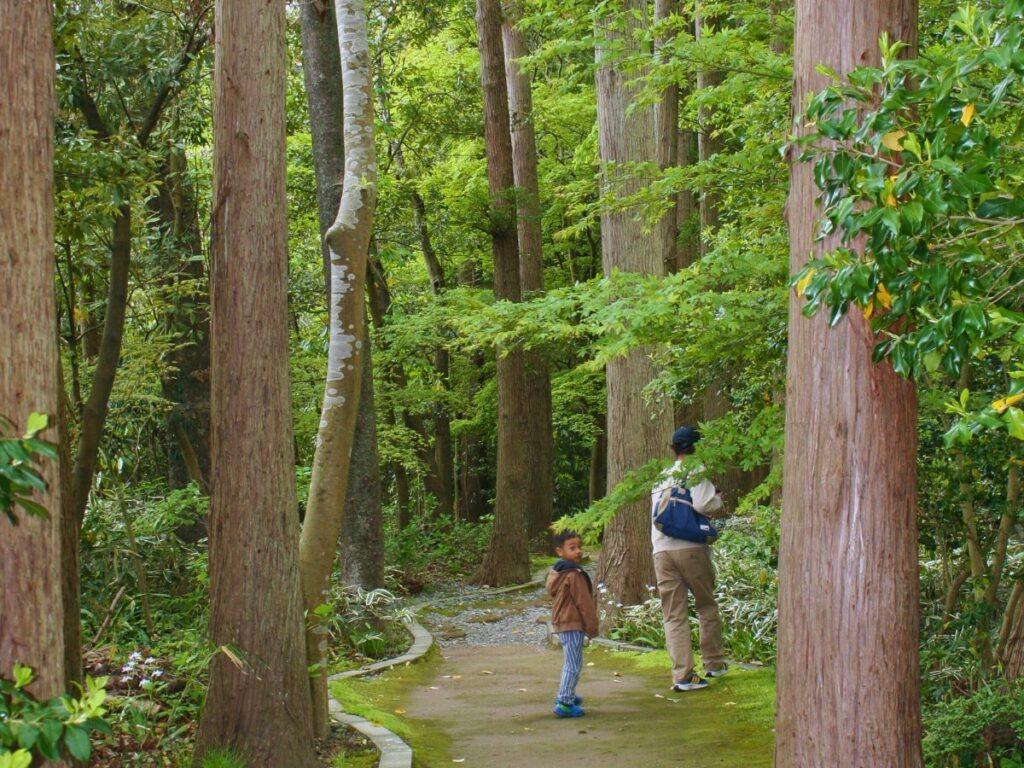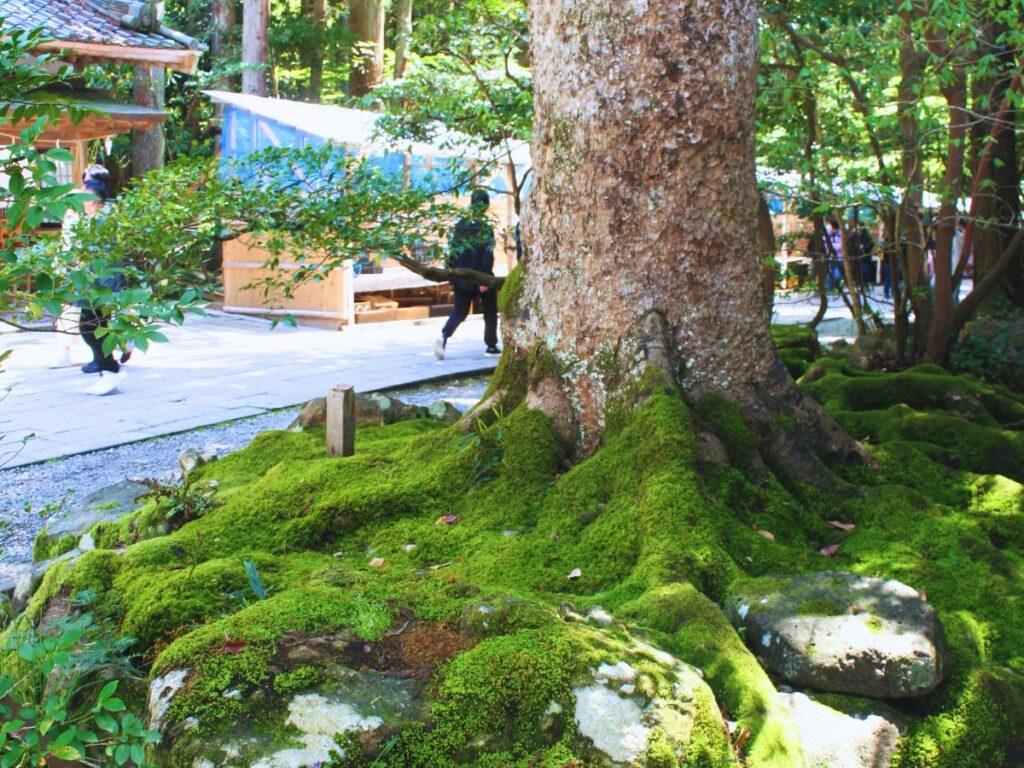I didn’t know much about Yahiko Shrine before going—just that it was a well-known spot in Niigata. But I had a free day in early May and decided to check it out. I was expecting a quiet walk and maybe a few nice photos, but it turned out to be one of the more memorable places I’ve been to in Japan.
The shrine is over 2,000 years old and dedicated to a god said to have taught the people in this area how to farm, fish, and live off the land. That history isn’t just written on signs—it’s everywhere. From the huge torii gate at the entrance to the tall cedar trees lining the path, the whole place feels calm, a little mysterious, and very alive.
If you’re thinking of going, here’s what it was like, what to look out for, and a few tips based on my visit.
Walking In: Big Gate, Cedar Trees, and a Bridge You Can’t Cross
The first thing you see when you arrive at Yahiko Shrine is the giant torii gate. And I mean giant—over 30 meters tall and made of copper. It’s one of the tallest in Japan, and it completely dominates the view when you come up the road. It was actually built in the early ’80s to mark the opening of the Joetsu Shinkansen line, so while it looks ancient, it’s relatively new by shrine standards.
After that, you walk down the sando, which is the main approach to the shrine. It’s wide, quiet, and lined with these massive cedar trees that make everything feel calm and cool—even in warmer weather. The stone lanterns along the sides give it that classic shrine look, and the deeper you go, the quieter it gets. It’s hard not to slow down and just enjoy the walk.
A little ways in, you’ll spot a small red bridge over a narrow stream—Tama-no-Hashi. It looks like the kind of thing you’d want to cross for a photo, but it’s actually reserved for the gods, so no walking on it, you mere mortal. Still, it makes for a great photo spot, especially with the way the bridge reflects in the water when it’s still. The stream was used for ritual purification, and you can tell it still holds a lot of significance.
This whole part of the walk—between the torii, the trees, and the bridge—is one of the most peaceful and scenic areas of the shrine. Even before you reach the main hall, it already feels like something special.
Main Shrine Area: Quiet, Impressive, and Very Old
At the end of the path, you’ll reach the Honden, or main hall of Yahiko Shrine. This is the heart of the whole place. The building itself is made entirely of wood, with a steep thatched roof and beautifully simple architecture—no bright colors or flashy decorations, just clean lines and solid craftsmanship. It’s been rebuilt a few times over the centuries (as is normal with Shinto shrines), but it stays true to its original style.
The shrine is dedicated to Ame-no-Kagoyama-no-Mikoto, a deity who’s said to have taught early people in this region how to grow crops, fish, and make tools. That makes him a big deal locally—not just a spiritual figure but kind of a cultural founder. You’ll see his name on signs around the grounds, and the whole place is considered sacred because of that connection.
Just next to the main hall, there’s a small open stage called the Kagura-den. It’s used for traditional dance and music during festivals, though when I was there, it was empty. You’ll see stages like this at most big shrines—it’s part of how these places still hold seasonal events and rituals.
There’s also an area nearby where ema (wooden prayer plaques) are hung. People write their wishes—everything from passing exams to finding love—and leave them behind. I always find it interesting to read a few, because it reminds you how universal a lot of our hopes are.
Other Cool Spots Around Yahiko’s Grounds
Once you’ve seen the main hall, don’t rush off—there’s a lot more tucked around Yahiko Shrine if you take the time to wander. Here are some of the extra spots I came across:
Homotsuden (Treasure Hall)
This is the shrine’s Treasure Hall, a small museum with old artifacts and items tied to the shrine’s history. Inside, you’ll find things like swords, armor, and ceremonial gear—some of it designated as Important Cultural Properties.
If you’re even a little curious about the deeper history of the place, this is a great spot to check out. It gives a lot more context to what you’re seeing outside.
Sacred Trees
As you explore, you’ll notice a bunch of giant cedar trees with thick rope tied around them (shimenawa). These trees are considered sacred, believed to hold spirits, and have probably been standing there for hundreds of years.
They really add to the whole vibe of the place—tall, quiet, and full of presence. And if you catch the light hitting them just right, it’s a great photo moment.
Omokaru no Ishi (Heavy-Light Stones)
Near the water purification area, there’s a small set of Omokaru stones you can try lifting. The idea is simple: make a wish, then lift one of the stones. If it feels light, your wish might come true. If it feels heavy… maybe not.
It’s a quick little ritual, but kind of fun—and surprisingly tricky. The stones are heavier than they look.
Shimosuwa Shrine (Sumo God Sub-Shrine)
Tucked into the woods a bit off the main path, there’s a small sub-shrine called Shimosuwa Shrine. It’s said to enshrine a strong, sumo-wrestler-like deity—someone tied to physical power and perseverance. According to old records, it’s been here since 1044 AD.
The shrine is simple and surrounded by trees, which gives it a tucked-away, peaceful feel. If you like finding quieter, less-visited spots, this one’s worth the detour.
Sumo Stone Monument
Right next to Shimosuwa Shrine is this unique stone monument—a pyramid of rounded stones, each with a carved crest. It looks symbolic of strength, probably tied to the sumo wrestler connection of the nearby shrine.
It’s also just visually cool, especially framed by the forest behind it. Definitely worth stopping for a photo or two.
Forest Trail
There are a few smaller trails that weave through the woods, and one of them starts near the back of the shrine. It’s a peaceful path lined with tall cedars, and even a short walk down it makes you feel like you’re somewhere far from everything.
If you’re not up for a full hike up Mount Yahiko, this is a great low-effort way to soak in the forest atmosphere.
Before You Leave: Goshuin, Charms, and Local Treats
Before wrapping up your visit, make sure to stop by the shrine office, located near the main hall. This is where you can pick up omamori (charms), buy souvenirs, and get your goshuin (shrine stamp).
I brought my goshuin-cho (stamp book) and got the Yahiko Shrine stamp here. It was handwritten with a brush right in front of me and stamped with bright red seals. The result felt like a little piece of the visit I could carry home with me. If you don’t have a book, you can also get the stamp on a separate piece of paper—just like I did in the photo above.
They offer a variety of omamori for things like safe travels, health, good luck, success in school, and even protection against bad relationships. Prices are usually around 500–800 yen, depending on the type. I didn’t grab one this time, but they’re all beautifully made, and each one is tied to the spirit of the shrine.
There are also a couple of small shops right outside the main grounds where you can get local sweets, snacks, and souvenirs. One of the most popular items is Yahiko dango—sweet rice dumplings that are slightly grilled and coated in a light sauce. I picked some up before heading back, and they were the perfect end to the visit
Why I’d Go Back to Yahiko Shrine
I went to Yahiko Shrine not really knowing what to expect—just hoping for a quiet place to explore. What I found was one of those spots that sticks with you in a quiet way. It’s not flashy or overly touristy. It’s peaceful, easy to walk around, and full of small moments that make you want to slow down—like standing under the cedar trees, listening to the stream, or stumbling across a little hidden shrine.
If you’re in the area, even just passing through Niigata, it’s worth making the trip. Go early, take your time, get a goshuin, and maybe grab a dango on your way out. I’m glad I went—and honestly, I wouldn’t mind going back.

